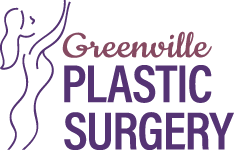Breast Augmentation
Augmentation Mammoplasty
- To enhance the body contour of a woman who feels her breast size is too small.
- To correct a reduction in breast volume after pregnancy.
- To balance a difference in breast size.
By inserting an implant behind each breast, surgeons are able to increase a woman’s bustline by one or more bra cup sizes. If you’re considering breast augmentation, this will give you a basic understanding of the procedure , when it can help, how it’s performed, and what results you can expect. It can’t answer all of your questions, since a lot depends on your individual circumstances.
The Best Candidates
Breast augmentation can enhance your appearance and your self-confidence. Before you decide to have surgery, think carefully about your expectations and discuss them with your surgeon. The best candidates for breast augmentation are women who are looking for improvement in the way they look. If you’re physically healthy and realistic in your expectations, you may be a good candidate.
The Types Of Implants
A breast implant is a silicone shell filled with either silicone gel or a salt-water solution known as saline. Patients now have a choice between saline implants and silicone implants. The silicone implants were approved by the FDA in October of 2006 and are available for breast augmentation patients on an unrestricted basis. Greenville Plastic Surgery offers both types of implants.
Considerations Before Having Surgery
Breast augmentation is relatively straightforward. But as with any operation, there are risks associated with surgery and specific complications associated with this procedure. The most common problem, capsular contracture, occurs if the scar or capsule around the implant begins to tighten. This squeezing of the soft implant can cause the breast to feel hard. Capsular contracture can be treated in several ways, and sometimes requires either removal or “scoring” of the scar tissue, or perhaps removal or replacement of the implant.
Some women report that their nipples become hypersensitive, hyposensitive, or even numb. You may also notice small patches of numbness near your incisions. These symptoms usually disappear within time.
Breast implants do not generally interfere with a woman’s ability to breast feed, or present a health hazard during pregnancy to a woman or her baby. However, pregnancy and the associated changes to a woman’s body may alter the results of any breast surgery, including surgery to place breast implants. Therefore, it is important to discuss the options of breast implant surgery with your plastic surgeon if you are interested in becoming pregnant and breast feeding in the future.
Occasionally, breast implants may break or leak. If a saline-filled implant breaks, the implant will deflate in a few hours and the salt water will be absorbed and naturally expelled by the body. If a silicone-gel filled implant leak or break, the elastic silicone gel may remain within the implant shell, or may escape into the breast implant pocket (a capsule of tissue that surrounds the implant). A leaking implant filled with silicone gel may not deflate and may not be noticeable except through imaging techniques such as an MRI. For this reason, a woman with silicone breast implants is advised to visit her plastic surgeon annually to assess that her implants are functioning well. An ultrasound exam or MRI screening can assess the condition of breast implants; after 3 years it is recommended that all silicone implants be properly screened.
Following the placement of breast implants mammography is technically more difficult. Obtaining the best possible results requires specialized techniques and additional views. You must be candid about your implants when undergoing any diagnostic breast exam. In many cases, an ultrasound exam or MRI may be recommended in addition to mammography.
Preparing For Your Surgery
Your surgeon will give you instructions to prepare for surgery, including guidelines on eating and drinking, smoking, and taking or avoiding certain vitamins and medications. While making preparations, be sure to arrange for someone to drive you home after your surgery and to help you out for a few days, if needed.
Where Your Surgery Will Be Performed
All cosmetic procedures are performed on an outpatient basis in our state-of-the-art in-house operating suite. Minor procedures are also performed in our office’s minor surgery rooms.
Type Of Anesthesia
Breast augmentation can be performed with a general anesthesia, so you’ll sleep through the entire operation.
The Surgery
The method of inserting and positioning your implant will depend on your anatomy and your surgeon’s recommendation. The incision can be made either in the crease where the breast meets the chest, around the areola. Every effort will be made to assure that the incision is placed so resulting scars will be as inconspicuous as possible.
After Your Surgery
You’re likely to feel tired and sore for a few days following your surgery, but you’ll be up and around in 24 to 48 hours. Most of your discomfort can be controlled by medication prescribed by your doctor.
Within several days, the gauze dressings, if you have them, will be removed, and you may be given a surgical bra. You should wear it as directed by your surgeon. You may also experience a burning sensation in your nipples for about two weeks, but this will subside as bruising fades.
Your stitches will come out in a week to 10 days, but the swelling in your breasts may take three to five weeks to disappear.
Returning To Your Routine
You should be able to return to work within a few days, depending on the level of activity required for your job.
Follow your surgeon’s advice on when to begin exercises and normal activities. Your breasts will probably be sensitive to direct stimulation for two to three weeks, so you should avoid much physical contact. After that, breast contact is fine once your breasts are no longer sore, usually three to four weeks after surgery.
Your scars will be firm and pink for at least six weeks. Then they may remain the same size for several months, or even appear to widen. After several months, your scars will begin to fade, although they will never disappear completely.
Routine mammograms should be continued after breast augmentation for women who are in the appropriate age group, although the mammographic technician should use a special technique to assure that you get a reliable reading, as discussed earlier.
Your New Look
For many women, the result of breast augmentation can be satisfying, even exhilarating, as they learn to appreciate their fuller appearance.
Regular examination by your plastic surgeon and routine mammograms for those in the appropriate age groups at prescribed intervals will help assure that any complications, if they occur, can be detected early and treated.


